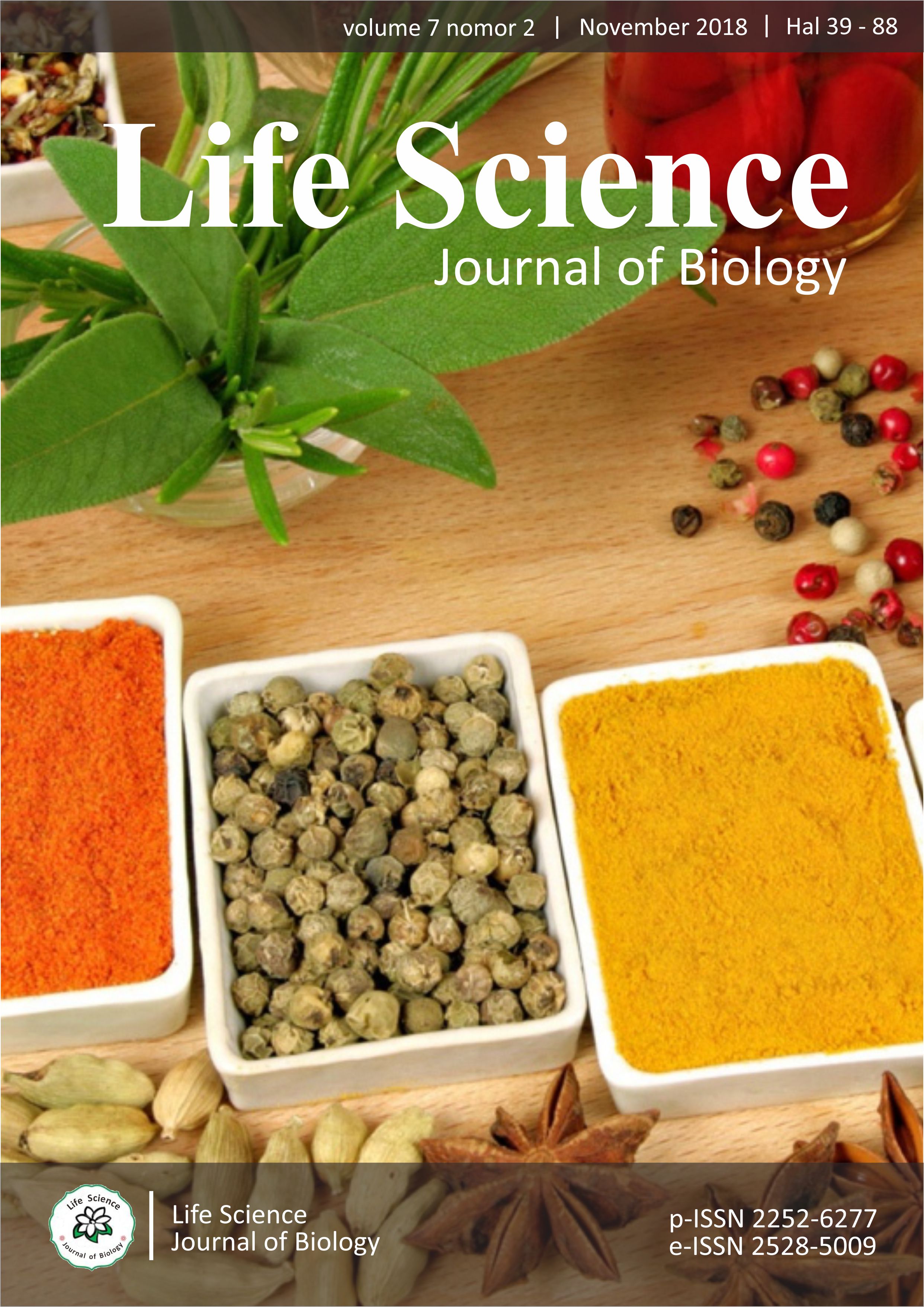Deteksi Escherichia coli Pada Jamu Gendong di Gunungpati dengan Medium Selektif Diferensial
Main Article Content
Abstract
Jamu gendong termasuk dalam kategori obat herbal yang dikonsumsi untuk menjaga kesehatan. Kontaminasi Escherichia coli pada produk jamu gendong dapat mempengaruhi manfaat jamu gendong sebagai obat herbal. Penelitian ini bertujuan untuk mendeteksi keberadaan bakteri E. coli pada sampel jamu gendong jenis beras kencur dan kunyit asam di Kecamatan Gunungpati Semarang. Penelitian ini merupakan penelitian observasional dengan sampel diambil secara acak. Sebanyak sebelas sampel jamu beras kencur dan kunyit asam dari perajin jamu gendong diuji menggunakan medium selektif diferensial Eosin Methylene Blue Agar. Sampel positif terkontaminasi E. coli pada medium EMBA ditunjukkan dengan adanya koloni berwarna gelap dengan kilap hijau metalik. Data yang diperoleh dari hasil uji keberadaan E. coli, perhitungan jumlah koloni E. coli dan lembar observasi dianalisis secara deskriptif. Penelitian ini menunjukkan bahwa dari sebelas sampel jamu gendong yang diuji, sembilan sampel beras kencur dan tiga sampel kunyit asam positif terkontaminasi E. coli. Hasil perhitungan jumlah koloni bakteri E. coli diperoleh sembilan sampel beras kencur dan dua sampel kunyit asam tidak memenuhi aturan batas cemaran mikroba dalam Standar Nasional Indonesia.
‘Jamu gendong’ included in herbal medicine category which consumed to maintain health. Escherichia coli contamination in ‘jamu gendong’ products can affect the benefits as an herbal medicine. This study aims to detect the presence of E. coli bacteria in the sample of ‘jamu gendong’ type of ‘beras kencur’ and ‘kunyit asam’ in Gunungpati District Semarang. This research is an observational study with random sampling. A total of eleven samples of ‘jamu gendong’ of ‘beras kencur’ and ‘kunyit asam’ from ‘jamu gendong’ sellers were tested using differential selective medium of Eosin Methylene Blue Agar. Positive samples which contaminated with E. coli in the EMBA medium are indicated by the presence of dark colored colonies with metallic green luster. Data obtained from the results of the test of the presence of E. coli, calculation of the number of E. coli colonies and observation sheets were analyzed descriptively. This study showed that of the eleven samples of ‘jamu gendong’ that were tested, nine samples of ‘beras kencur’ and three samples of ‘kunyit asam’ were positively contaminated with E. coli. The results of the calculation of the number of colony of E. coli bacteria obtained nine samples of ‘beras kencur’ and two samples of ‘kunyit asam’ did not meet the rules for the limits of microbial contamination in the Indonesian National Standard.


